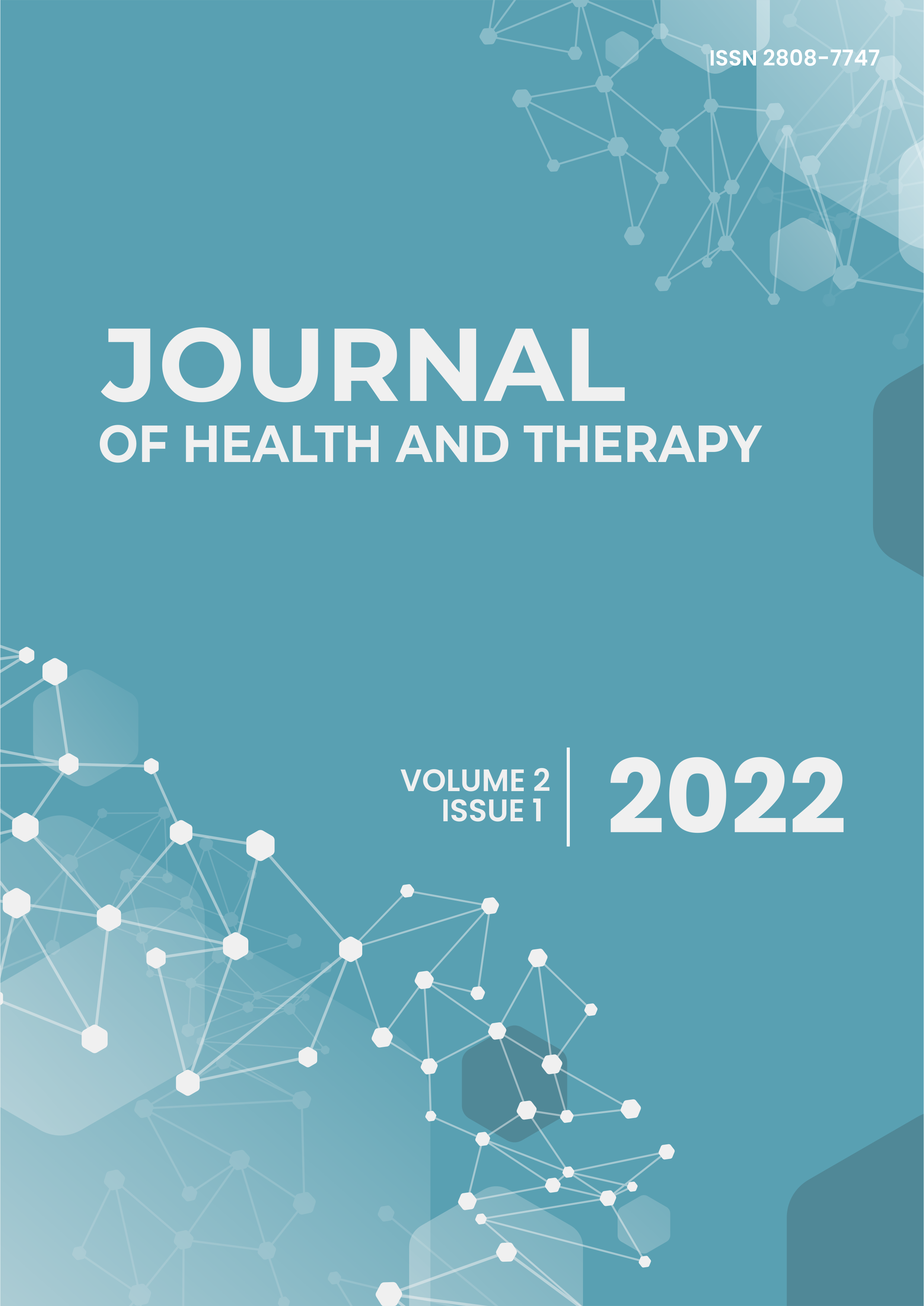Manajemen Fisioterapi Pada Pasien Post Reconstruction Anterior Cruciatum Ligament (ACL) Fase III : A Case Report
DOI:
https://doi.org/10.53088/jht.v2i1.2123Keywords:
ACLR, atrophy, hypertrophy, lower extremity, quadriceps, gastrocnemiusAbstract
The stability of the knee joint during rotational movement so that excessive translation does not occur in the tibia and femur is the main function of the anterior cruciate ligament (ACL). This ligament is frequently injured and must be reconstructed to restore stability to the knee, reducing the risk of re-injury in order to return to sports safely. The purpose of this case report is to provide information regarding the appropriate physiotherapy exercise program in phase III post ACLR. A 38-year-old man who has a hobby of playing soccer has injured his ACL and has undergone ACL reconstruction in June 2021. When the post-ACLR examination was carried out, it had entered its 9th week and therapy was carried out for 4 weeks. The results showed that after carrying out 6 treatments in 4 weeks there was a significant change in passive knee dextra ROM. But there is no change in edema and there is no hypertrophy of the quadriceps and gastrocnemius muscles. The increase in functional activity as measured using the lower extremity functional scale (LEFS) showed an increase in activity standing for 1 hour and walking as far as 1 mile. Strength deficits and post-ACL reconstruction muscle atrophy, especially in the quadriceps muscles, can be overcome by incorporating a program of closed kinetic and open kinetic chain exercises as well as isometric exercises. Despite a rehabilitation program, the mechanical strength of the ACL does not fully return to normal
References
Athletic, M., Noyes, F. R., & Barber-Westin, S. (2019). Return To Sport After Acl Reconstruction And Other Knee Operations. https://doi.org/10.1007/978-3-030-22361-8
Binkley, J., Stratford, P., & Lott Sa Riddle, D. (1999). Lower Extremity Functional Scale (Lefs). North American Orthopaedic Rehabilitation Research Network, 79(4), 371–383.
Charles, D., White, R., Reyes, C., & Palmer, D. (2020). A Systematic Review Of The Effects Of Blood Flow Restriction Training On Quadriceps Muscle Atrophy And Circumference Post Acl Reconstruction. International Journal Of Sports Physical Therapy, 15(6), 882–891. https://doi.org/10.26603/ijspt20200882
Cheon, S., Lee, J. H., Jun, H. P., An, Y. W., & Chang, E. (2020). Acute Effects Of Open Kinetic Chain Exercise Versus Those Of Closed Kinetic Chain Exercise On Quadriceps Muscle Thickness In Healthy Adults. International Journal Of Environmental Research And Public Health, 17(13), 1–11. https://doi.org/10.3390/ijerph17134669
Friedmann-Bette, B., Profit, F., Gwechenberger, T., Weiberg, N., Parstorfer, M., Weber, M. A., … Barié, A. (2018). Strength Training Effects On Muscular Regeneration After Acl Reconstruction. Medicine And Science In Sports And Exercise, 50(6), 1152–1161. https://doi.org/10.1249/mss.0000000000001564
Jewiss, D., Ostman, C., & Smart, N. (2017). Open Versus Closed Kinetic Chain Exercises Following An Anterior Cruciate Ligament Reconstruction: A Systematic Review And Meta-Analysis. Journal Of Sports Medicine, 2017, 1–10. https://doi.org/10.1155/2017/4721548
Kvist, J. (2004). Rehabilitation Following Anterior Cruciate Ligament Injury: Current Recommendations For Sports Participation. Sports Medicine, 34(4), 269–280. https://doi.org/10.2165/00007256-200434040-00006
Kyritsis P, W. E. (2014). Return To Sport After Anterior Cruciate Ligament Reconstruction: A Literature Review. Journal Of Novel Physiotherapies, 04(01), 1–6. https://doi.org/10.4172/2165-7025.1000193
Lepley, L. K., Davi, S. M., Burland, J. P., & Lepley, A. S. (2020). Muscle Atrophy After Acl Injury: Implications For Clinical Practice. Sports Health, 12(6), 579–586. https://doi.org/10.1177/1941738120944256
Lisee, C., Lepley, A. S., Birchmeier, T., O’hagan, K., & Kuenze, C. (2019). Quadriceps Strength And Volitional Activation After Anterior Cruciate Ligament Reconstruction: A Systematic Review And Meta-Analysis. Sports Health, 11(2), 163–179. https://doi.org/10.1177/1941738118822739
Maralisa, A. D., Lesmana, S. I., Fisioterapi, D., Fisioterapi, F., Unggul, U. E., Graft, H., … Comitee, D. (2020). Penatalaksanaan Fisioterapi Rekonstruksi Acl Knee Dextra Hamstring. Indonesian Journal Of Physiotherapy Research And Education, 1(1), 4–17.
Marieswaran, M., Jain, I., Garg, B., Sharma, V., & Kalyanasundaram, D. (2018). Review Article A Review On Biomechanics Of Anterior Cruciate Ligament And Ma[1] M. Marieswaran, I. Jain, B. Garg, V. Sharma, And D. Kalyanasundaram, “Review Article A Review On Biomechanics Of Anterior Cruciate Ligament And Materials For Reconstruction,.” 2018.
Opplert, J., & Babault, N. (2018). Acute Effects Of Dynamic Stretching On Muscle Flexibility And Performance: An Analysis Of The Current Literature. Sports Medicine, 48(2), 299–325. https://doi.org/10.1007/s40279-017-0797-9
Perriman, A., Leahy, E., & Semciw, A. I. (2018). The Effect Of Open-Versus Closed-Kinetic-Chain Exercises On Anterior Tibial Laxity, Strength, And Function Following Anterior Cruciate Ligament Reconstruction: A Systematic Review And Meta-Analysis. Journal Of Orthopaedic And Sports Physical Therapy, 48(7), 552–566. https://doi.org/10.2519/jospt.2018.7656
Rehabilitation, H. S. S. (2020). Knee Anterior Cruciate Ligament (Acl) Reconstruction Post-Operative Guidelines Pre-Operative Phase. 1–22.
Santoso, I., Sari, I. D. K., Noviana, M., & Pahlawi, R. (2018). Penatalaksanaan Fisioterapi Pada Post Op Rekonstruksi Anterior Cruciate Ligament Sinistra Grade III Akibat Ruptur Di Rspad Gatot Soebroto. Jurnal Vokasi Indonesia, 6(1), 66–80. https://doi.org/10.7454/jvi.v6i1.117
Downloads
Published
How to Cite
Issue
Section
License
Copyright (c) 2022 Rifkah Aliyah

This work is licensed under a Creative Commons Attribution-ShareAlike 4.0 International License.
Authors who publish with this journal agree to the following terms:
The author(s) retain copyright and grant the journal the right of first publication with the work simultaneously licensed under a CC BY-SA 4.0 license that allows others to remix, adapt, and build upon the work even for commercial purposes, as long as they credit the author(s) and license their new creations under the identical terms.
License details: https://creativecommons.org/licenses/by-sa/4.0/

